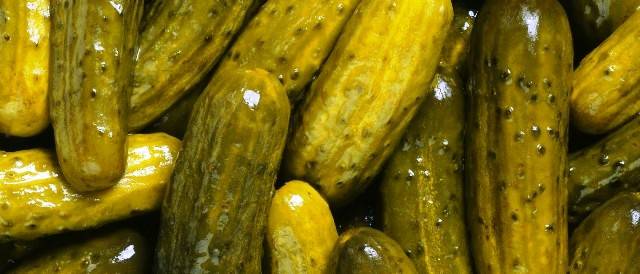
In our last article, we discussed why it should be considered to grow Gherkins? Due to its huge demand in the international market and the contract farming basis of its business model, Gherkins are attracting a lot of applause and appreciation. In this article, we present you the manner in which they are suggested to be grown by Tamil Nadu Agricultural University as presented on their website agritech.
Gherkins are usually picked when 4 to 8 cm (1 to 3 in) in length and pickled in jars or cans with vinegar (often flavored with herbs, particularly dill; hence, "dill pickle") or brine.
The various inputs and factors which are needed to be considered while growing these are :
Soil
Well-drained sandy loam with a pH range of 6.0 to 6.8 is optimum.
Seed rate
800 g per hectare.
Sowing
Sow the seeds at 30 cm spacing on sides of the ridges with 2 seeds per hill after treating with Trichoderma viride @ 4 g or Pseudomonas @ 10 g or carbendazim @ 2 g/kg of seeds.
Preparatory cultivation
Apply 25 t/ha of FYM. Prepare ridges and furrows one meter apart.
Manuring
Apply N - 150 kg, P - 75 kg and K - 100 kg/ha in 3 equal splits i.e., basal, three and five weeks after sowing.
After cultivation
Earth up the plants 25 days after sowing. Provide support to plants as and when vines start trailing.
Drip irrigation
Install a drip system with main and sub-main pipes and place the inline lateral tubes at an interval of 1.5m. Place the drippers in lateral tubes at an interval of 60 cm and 50 cm spacing with 4 LPH and 3.5 LPH capacities respectively.
Field preparation
Raise beds of 120 cm width at an interval of 30 cm and place the laterals at the center of each bed.
Fertigation
Apply the recommended dose of fertilizers viz., 150:75:100 Kg NPK / ha fertigate on every third day after sowing.
Plant protection
Pest
Minor pest
To control leaf miner, whitefly, aphids, and thrips spray Dimethoate 1.5 ml/l or Monocrotophos 1.5 ml/l or Malathion 1.5 ml/l.
Diseases
Spray Carbendazim 0.05 % (0.5 g/l) to control diseases.
Harvest
The crop is ready for harvest in 30-35 days. As the tender immature fruits are meant for canning the price of the product is decided by the stage of maturity. Smallest fruit (stage 1) which will weigh approximately 4.0g (250 fruits per kg) will fetch the maximum price followed by stage 2 and stage 3.
To maintain the grade the harvesting of fruits should be done every day. A day’s break would end up with outsized or overgrown gherkin means a loss to the farmer. Avoid sharp sun and high temperature while harvesting. For this picking of fruits must be none in the very early morning or late evening. Harvest the fruits by retaining the stalk on the plant. Harvested fruits must be collected under shade. The flower head has to be removed from the fruit.
Water should not be sprinkled on harvested fruits at any stage. Even if there is surface water during harvest it should be dried by aeration. For a collection of fruits jute bags alone have to be used and plastic bags should be totally avoided. The harvested produce should be transported to the factory on the same day before dusk. Leaving the gherkin unprocessed overnight would result in poor quality produce.
Yield
A good yield of 10 - 12 tonnes/ha can be achieved in 90 days.










